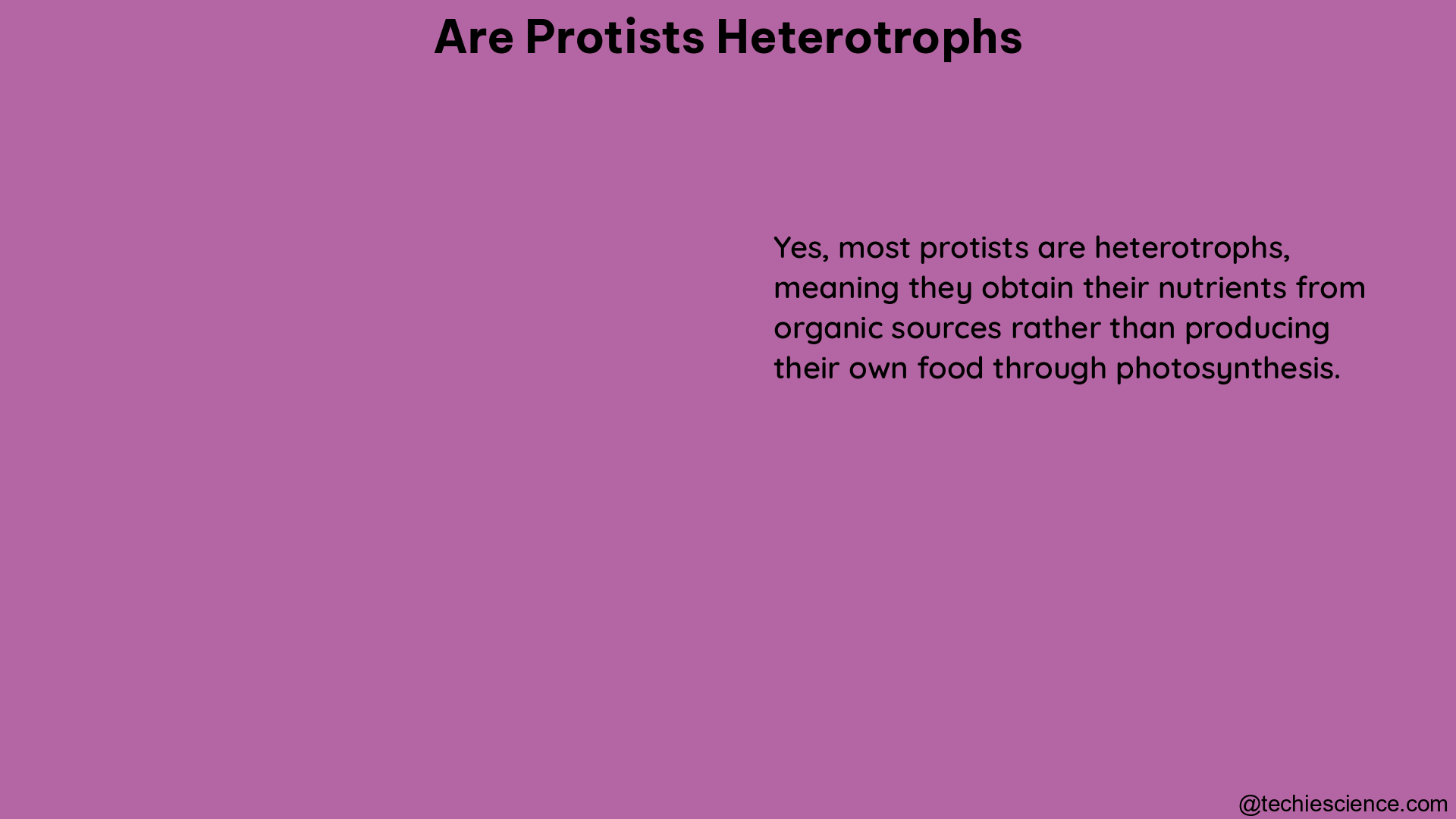Summary
Protists are a diverse group of eukaryotic organisms that exhibit a wide range of nutritional modes, including heterotrophy, autotrophy, and mixotrophy. While the exact proportion of heterotrophic protists within the Protista kingdom is not well-defined, it is estimated that a significant portion of these organisms rely on consuming other organisms or organic matter for their nutritional needs. This blog post delves into the intricacies of heterotrophic protists, their importance in marine ecosystems, and the research tools used to study their diversity and community composition.
Understanding Protist Nutritional Modes

Protists can be classified into three main nutritional modes:
-
Heterotrophy: Heterotrophic protists obtain their nutrients by consuming other organisms or organic matter. This includes protists such as Amoeba and Plasmodium.
-
Autotrophy: Autotrophic protists, such as giant kelp and sea lettuce, possess chlorophyll and can produce their own food through photosynthesis.
-
Mixotrophy: Mixotrophic protists, like Euglena, can switch between autotrophy and heterotrophy, depending on environmental conditions.
Importance of Heterotrophic Protists in Marine Ecosystems
Heterotrophic protists play a crucial role in marine ecosystems, contributing to the diversity and community composition of these environments. Here are some key points about their significance:
-
Diversity and Community Composition: Studies have revealed a high diversity and community composition of marine heterotrophic protists, indicating their importance in these ecosystems.
-
Aquatic Food Webs: Heterotrophic and mixotrophic protists, collectively known as phagotrophic protists, are essential components of aquatic food webs. They contribute to the microbial loop and the marine carbon cycle through respiration.
-
Nutrient Cycling: Heterotrophic protists are involved in the cycling of nutrients, such as carbon and nitrogen, within marine ecosystems. They consume organic matter and release inorganic nutrients, which can then be utilized by other organisms.
-
Ecosystem Functioning: The presence and activities of heterotrophic protists can have a significant impact on the overall functioning and productivity of marine ecosystems.
Specific Examples of Heterotrophic Protists
-
Amoeba: Amoeba are unicellular, heterotrophic protists that move and feed using pseudopodia (temporary extensions of the cell membrane). They consume bacteria, algae, and other small organisms.
-
Plasmodium: Plasmodium is a genus of parasitic protists that cause malaria in humans and other vertebrates. These heterotrophic protists rely on their host organisms for nutrients and survival.
-
Euglena: Euglena is a mixotrophic protist that can switch between autotrophy and heterotrophy. It possesses chloroplasts for photosynthesis but can also consume organic matter.
Research Tools and Techniques for Studying Heterotrophic Protists
Researchers have employed various tools and techniques to quantify the diversity and community composition of heterotrophic protists. These include:
-
Culture-Independent, Molecular Methods: Techniques such as environmental DNA (eDNA) sequencing and metagenomics have allowed researchers to study the diversity of uncultured heterotrophic protists.
-
Single-Cell Sequencing: Advanced single-cell sequencing techniques have revealed unexpectedly high diversity in functional and phylogenetic groups of protists, including heterotrophs.
-
Microscopy and Imaging: Traditional microscopy techniques, combined with advanced imaging methods, have been used to observe and identify different species of heterotrophic protists.
-
Bioinformatics and Computational Analysis: Sophisticated bioinformatics tools and computational analyses have been employed to process and interpret the vast amounts of data generated by these research methods.
Conclusion
While the exact proportion of heterotrophic protists within the Protista kingdom is not well-defined, it is clear that a significant portion of these organisms rely on consuming other organisms or organic matter for their nutritional needs. Heterotrophic protists play a crucial role in marine ecosystems, contributing to the diversity, community composition, and overall functioning of these environments. Researchers have employed a variety of tools and techniques to study the diversity and importance of heterotrophic protists, revealing their unexpectedly high diversity and their essential role in aquatic food webs and nutrient cycling.
References
- Slide Share: What single unique characteristic of a protist would be considered?
- BYJUS: Are all protists heterotrophs?
- NCBI: Diversity and community composition of marine heterotrophic protists in the Arctic Ocean in summer and winter
- Science Direct: Phagotrophic protists as keys to understand the cryptic diversity of microbial eukaryotes
Hi …I am Tulika Priyadarshini, I have completed my Master’s in Biotechnology. Writing gives me mental peace and satisfaction. Sharing the knowledge that I gain in the process is a cherry on the cake. My articles are related to Lifesciences, Biology and Biotechnology. Lets connect through LinkedIn-